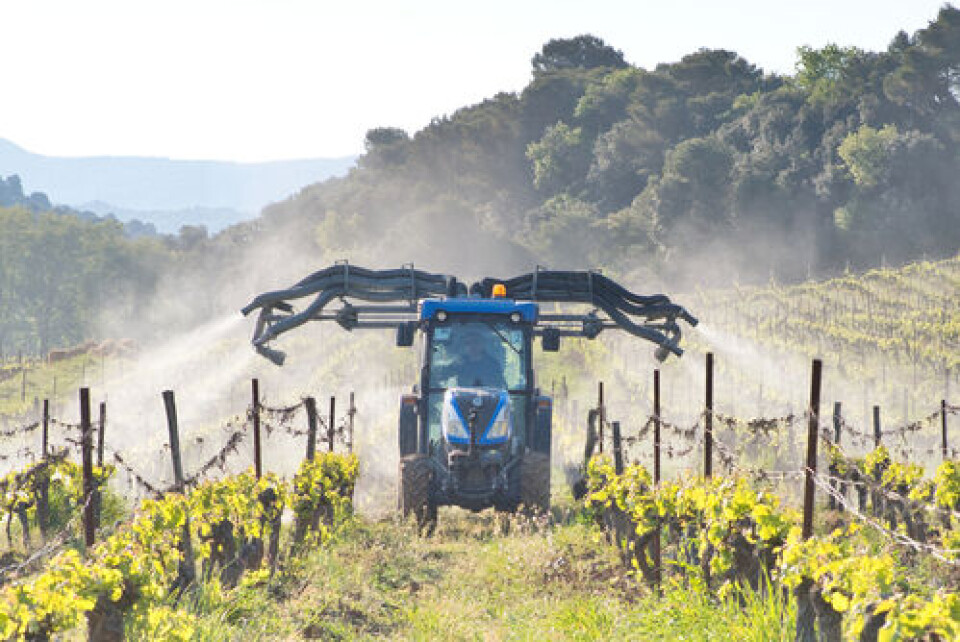-
Marine Le Pen appeal decision should be given in summer 2026, says court
It comes as the RN leader continues to maintain her ‘innocence’ and right-wing politicians have called her conviction ‘an attack on democracy’
-
Collective legal action taken against French low-cost dentist chain
More than 1,500 patients claim to have been left mutilated or without teeth after botched interventions
-
Map shows communes least, and most, exposed to pesticides in France
Environmental groups are calling for users to write to the health ministry to call for less pesticide exposure and more access to organic food
French rural residents ‘must be protected from pesticides’
The Conseil d’Etat has ruled that minimum distances between homes and pesticide-approved agricultural land insufficient

Rural dwellers must be better protected from dangerous pesticides, the highest administrative court has ordered the government.
The Conseil d’Etat first ruled that the current minimum distances between homes and agricultural land where pesticides are authorised were insufficient in July 2021.
Read more: MAP - See level of pesticide use in your area of France
It was called upon to issue another judgement after environmental associations claimed this had not been acted on.
Now the court has given the government two months to increase the distances, or face a €500 penalty for each day it is late.
It cited the “serious consequences of the partial failure to act in terms of public health”.
Dangerous
For the most dangerous pesticides, known as CMR1, farmers must respect a 20-metre no-spray zone between their crops and homes.
They can still grow crops in this zone but must not use the chemicals in question.
CMR1 pesticides are known, in sufficient quantities, to cause cancer, genetic mutations or damage to the reproductive process.
The Conseil d’Etat decision, however, pertains to those in the CMR2 category, which are only ‘suspected’ of having these effects.
The no-spray zone for these products is currently five to 10 metres, dependent on the crop, but can be reduced to three to five depending on the techniques used to spray them.
Following the court’s first ruling in July 2021, the government asked food, environmental and occupational health and safety agency Anses to review the categorisations of different products.
Last November, it launched a public consultation over a decree which would impose a strict 10-metre limit on CMR2 pesticides, for which the authorisation does not specify another distance.
Nadine Lauverjat, a representative of Générations Futures, part of the coalition that took the case to the Conseil d’Etat, welcomed the court’s decision but said: “We will see if it is really applied once the spraying begins again in February and March.”
20-metre zone not enough
The association argues that even the 20-metre zone is not enough to protect people, and that traces of pesticides found nearby only begin to decrease significantly between 50 and 100 metres.
Read more: Pesticide no-spray zones in France ‘not enough to keep us safe’
They say factors such as wind speed and different categories of the population are not sufficiently taken into account in the risk assessments.
“It is presumed that a young woman of puberty age must weigh more than 60kg, but there are many who weigh less, and are not taken into account.
Yet we know this is a period where there are lots of hormones and endocrine disruptors can cause issues.”
Ms Lauverjat also called for local residents to be better informed about when and where chemicals are being used.
“Inhabitants are not asking for farming to stop, but just to know when and with what the farmer will spray the field next to their home.
They don’t currently have access to that information.”
App 'for hunters but not for farmers'
She suggested this could be done via a mobile app. “We’re able to make one for hunters but not for farmers?
They should be able to use text message or an app to inform people 24 hours in advance that they will use such and such product, so people can plan to be away, or to avoid having a barbecue when the tractor goes past.”
Farmers are obliged to warn locals in advance, but Ms Lauverjat said this is often done via lights which are turned on just before the spraying begins, making it impossible for people to avoid the area if they happen to be walking nearby, for example.
She recommends contacting the Office français de la biodiversité if you believe a farmer is not respecting no-spray zones: for example, if you notice leaves falling from a tree in your garden or grass which turns orange from glyphosate.
Related articles
Rice packets recalled in France over traces of banned pesticide
Which products can I use to kill weeds in my French garden?
12 million people in France have drunk pesticide-contaminated water
























